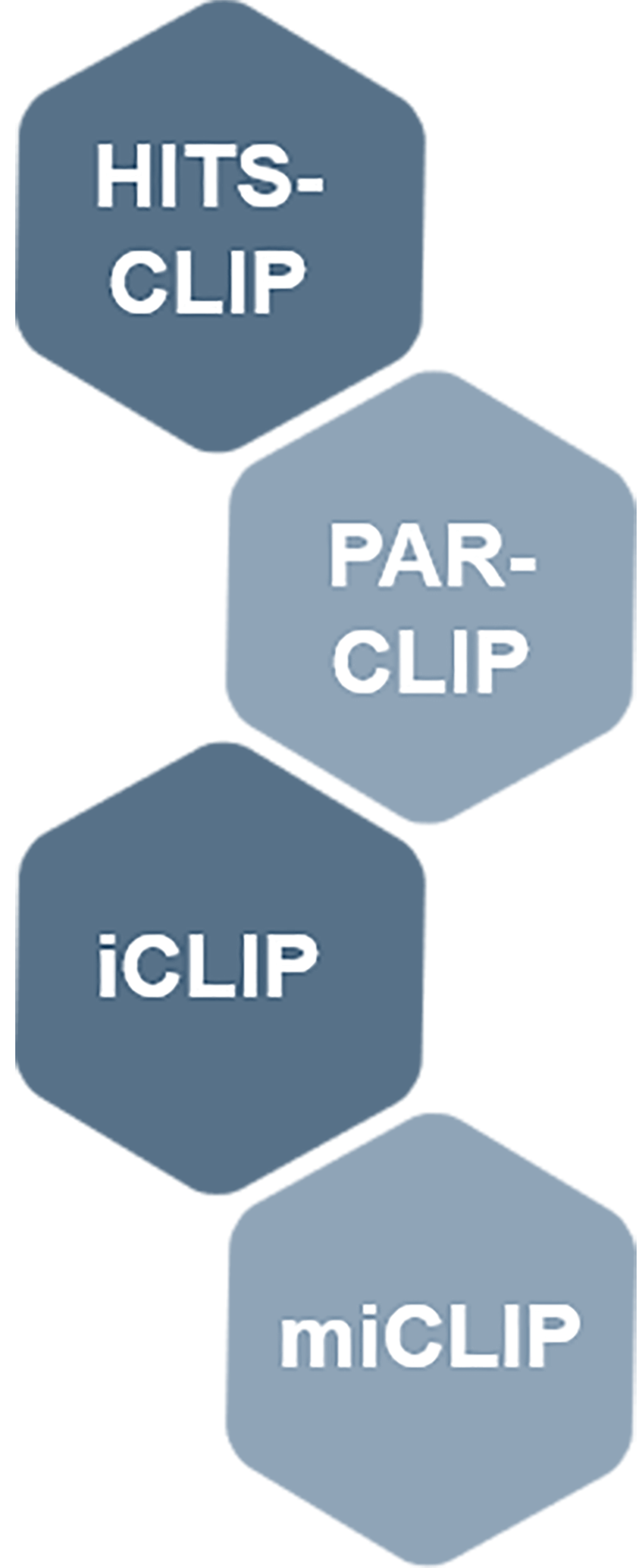As one of the classic research techniques for studying RNA-protein interactions, crosslinking-immunoprecipitation (CLIP) is similar to RNA immunoprecipitation (RIP), both of them exploit antibodies to precipitate the RNA-binding protein (RBP) of interest and then perform downstream analysis. However, the ultraviolet (UV) light crosslinking step added in CLIP makes it more specific and only links proteins to RNAs that are in very close proximity. Using this technique, the native binding sites of RNA-binding protein can be marked and potentially allows the identification of the entire target repertoire of an RNA binding protein, thereby facilitating a better understanding of post-transcriptional regulatory networks and mechanisms.
At Creative BioMart, various crosslinking-immunoprecipitation (CLIP) techniques are alternative to meet all of your specific research demands, including HITS-CLIP (also known as CLIP-Seq), photoactivatable ribonucleotide-enhanced CLIP (PAR-CLIP), individual nucleotide-resolution CLIP (iCLIP), as well as methylation individual-nucleotide-resolution CLIP (miCLIP).
What Is Crosslinking-immunoprecipitation (CLIP)?
The RNA-protein complex is covalently cross-linked by UV irradiation. Once covalently bound, the RNA-protein complex can be purified under stringent conditions, allowing for the use of highly specific purification scheme. After UV irradiation, the tissue is dissolved, and the RNA is partially digested, allowing small fragments to remain attached to the protein. RNA-RBP complexes of interest are purified by immunoprecipitation and non-covalently bound RNAs are removed by sodium dodecyl sulfate polyacrylamide gel electrophoresis (SDS-PAGE). These purified RNA-RBP complexes are isolated and treated with proteinases, which digest the protein but leaves intact RNA. The isolated RNA is reverse transcribed into cDNA and then analyzed by microarray or sequencing. Unlike DNA-protein cross-linking with formaldehyde, the UV crosslinking technology utilized by CLIP is irreversible and more specific. Furthermore, there is no UV crosslinks formed between the two proteins.

Figure 1. Schematic illustration of the principle behind CLIP
Categories of Crosslinking-immunoprecipitation (CLIP)
More specialized techniques have been developed from CLIP and are shown as follows:

Our Advantages
Workflow of Crosslinking-immunoprecipitation (CLIP) at Creative BioMart
You can choose any specialized CLIP technique and downstream application based on your research demands and budget. The workflow shown below only demonstrates the basic CLIP technology.

Figure 2. Workflow of CLIP services at Creative BioMart
As a global biotech contract research organization (CRO), Creative BioMart provides services to customers all cross the continents in the biopharmaceutical and biotech industries. Please feel free to contact us if you have any questions about our CLIP services.
References
1. Huppertz I.; et al. iCLIP: protein-RNA interactions at nucleotide resolution. Methods. 2014, 65(3): 274-287.
2. Riley KJ, Steitz JA. The “Observer Effect” in genome-wide surveys of protein-RNA interactions. Molecular Cell. 2013, 49(4): 601-604.
USA
Enter your email here to subscribe.
Follow us on

Easy access to products and services you need from our library via powerful searching tools